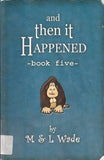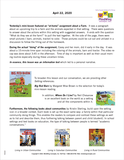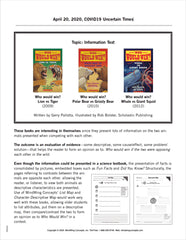Menu
-
- Home
-
About Us
-
The Approach
-
Linking Language & Literacy
-
MindWing Learning
-
Learning Resources
-
SHOP
-
Blog
-
- About MindWing
- Our People
- Contact Us
- Your Account
- Login
-
Spain (EUR €)


May 5, 2020: A book of short stories with serious messages through many voices
May 05, 2020

Fleischman, R. (2004). Seedfolks. NY: Harper Trophy. This is a collection of voices of people who, in one way or another, relate to a vacant lot in Cleveland, Ohio, during the 1930s. The vacant lot is full of smelly trash dumped there over a period of years. Gradually, people are drawn to the site to plant, see things grow and to socialize. All are people who have sustained great hardships in life. Each short chapter is a snippet of their experience, mostly as immigrants to our country. I’ve selected the character Leona as a focus for this lesson. Leona’s chapter begins with a memory of her grandmother. The memory centered on goldenrod tea with a nutmeg floating in it. Her grandmother drank it every day to ward off illness…and any doctor! There are several kick-offs that signal mini-episodes within this short story. Handout Available...

May 1, 2020: “And Then It Happened”—Books for Older Students
May 01, 2020
 Wade, M & L. (2006). And Then It Happened. Ontario, Canada: Books for Boys. This series of books was given to me when I was in Ontario, Canada, presenting about narrative development. I thought I would present one of these stories today since there is an opportunity to have a little fun with the content of these volumes. The short stories are written for boys (and girls) between grades 3 & 6. The website www.boysbookshelf.com provides a sample short story from each of the volumes as well as listings of all the Canadian school systems visited by Michael Wade, one of the authors. My favorite story is “The Giant Cupcakes.” I have used it as reader’s theater with props. It is lots of fun. There are several Kick-Offs throughout this short story. Handout Available...
Wade, M & L. (2006). And Then It Happened. Ontario, Canada: Books for Boys. This series of books was given to me when I was in Ontario, Canada, presenting about narrative development. I thought I would present one of these stories today since there is an opportunity to have a little fun with the content of these volumes. The short stories are written for boys (and girls) between grades 3 & 6. The website www.boysbookshelf.com provides a sample short story from each of the volumes as well as listings of all the Canadian school systems visited by Michael Wade, one of the authors. My favorite story is “The Giant Cupcakes.” I have used it as reader’s theater with props. It is lots of fun. There are several Kick-Offs throughout this short story. Handout Available...

April 29, 2020: Esperanza Rising’s Theme of Hope: A Book for Use with Older Students
April 29, 2020
Today, I am continuing discussing the books that I recommended yesterday for students who are older and would like to read short stories, verse and novels. I cited eight titles and provided annotations for each. Each of the books focuses on the theme of resilience and with the ability to take perspective of self and others, students will be able to “see themselves through others’ experiences” and reflect on their lives in general. During the next several days, I will provide a glimpse into each book and refer to the Story Grammar Marker®. Today we will apply the Story Grammar Marker® to Esperanza Rising, chapter 1. I chose Esperanza Rising as the first in this series since Esperanza means “HOPE.” Hope is a vital character trait for us to focus on during these times. Through literature, students learn about themselves, through others’ experiences. They see resilience in action!

April 28, 2020: Book List for Older Students During COVID19, FB Live
April 28, 2020
Today, we talk about a list of books for older children. These books are great for teaching components of narrative development using our Story Grammar Marker® icons. If you and your students understand these components and can use them to focus the discussion of the story itself, they will be better at listening and reading comprehension. Each of the following lend themselves to a read-aloud, although each may be read traditionally. Also, each of the stories have some form of information, knowledge, used by the various authors. For instance, dePaola’s book begins with a hurricane; Fleischman’s concerns a garden: planting, sunlight, vegetables, etc...

April 22, 2020: More About Settings, FB Live
April 22, 2020
To broaden this lesson about settings and our conversation about a farm, we are providing other setting references: Big Red Barn by Margaret Wise Brown is the selection for today’s mini-lesson reading. Other suggestions are provided in the handout...

April 20, 2020: COVID19 Uncertain Times, FB Live
April 20, 2020
The “Who Would Win…” books are interesting in themselves since they present lots of information on the two animals presented when competing with each other. The outcome is an evaluation of evidence—some descriptive, some cause/effect, some problem/solution—that helps the reader to form an opinion as to: Who would win, it the two were opposing each other in the wild. Even though the information could be presented in a science text book, the presentation of facts is consolidated by pictures, embedded boxes such as Fun Facts and Did You Know? Structurally, the pages referring to contrasts between the animals are opposite each other, allowing the reader, or listener, to view both animals as descriptive...




